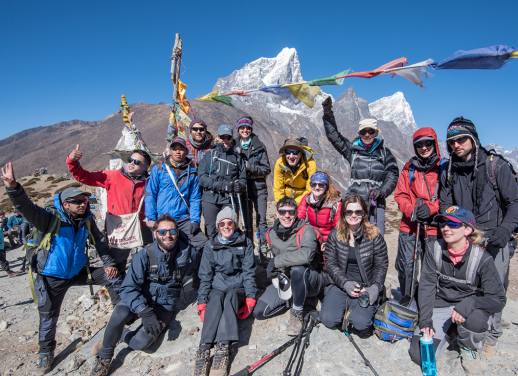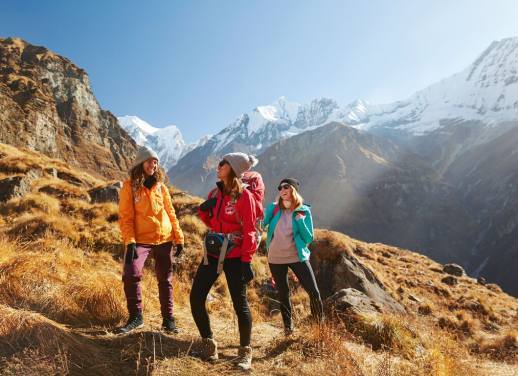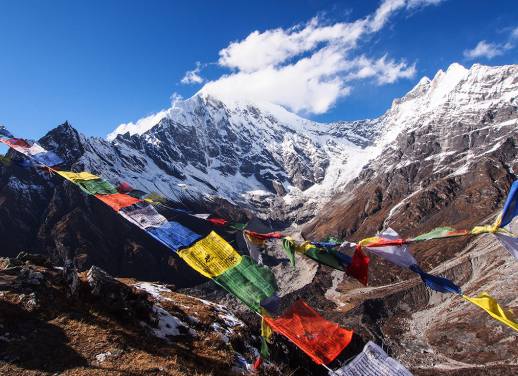I didn’t know much about Nepal’s Annapurna mountain range before my visit with Intrepid Travel on their Annapurna Base Camp trek.
I knew that the Annapurnas were home to 30 mountain peaks over 6000 metres (19,685 feet) above sea level, including the mighty Annapurna I, which stands at 8091 metres/26,545 feet. I’d heard that the scenery was more diverse than on the Everest Base Camp trek. I was pretty sure there’d be lots of dogs. But before I left I was more worried about my physical fitness than the experience of actually trekking.
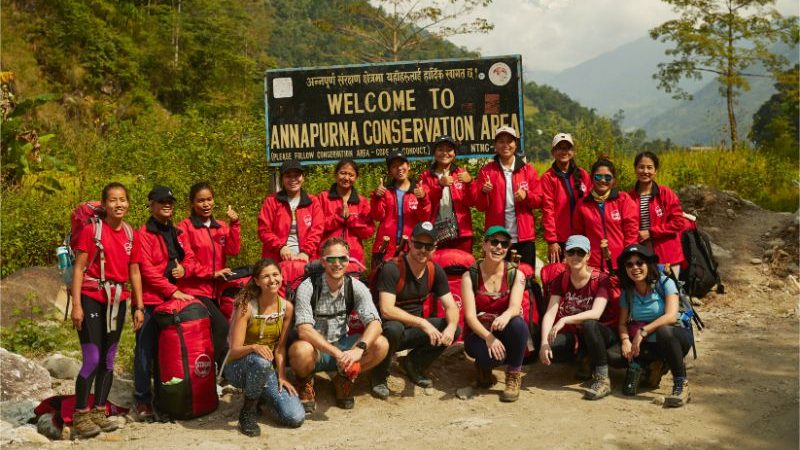
Ready. Get set. Go.
While I won’t give away any spoilers, this is what you should know before your trek with Intrepid to Annapurna Base Camp.
1. You can pick up last-minute gear and supplies in Pokhara before the trek
Didn’t pack enough hiking socks? No stress. Pokhara is your last chance to pick up any last-minute trekking gear. The chilled tourist town has plenty of shops selling hiking and camping gear up and down the main street. Before my trek, I was worried the shops would have sold out of things I might need, but this is absolutely not the case; there’s really no chance of not finding what you’re after. While you should try to get the big stuff (boots, down jacket, hiking pants) well before you leave home, you’ll be able to buy or hire additional supplies in Pokhara. They’re almost all cheap knock offs, but they do the job.
JOIN US ON OUR 15-DAY ANNAPURNA BASE CAMP TREK – FULL DETAILS HERE
2. You won’t regret hiring or buying trekking poles
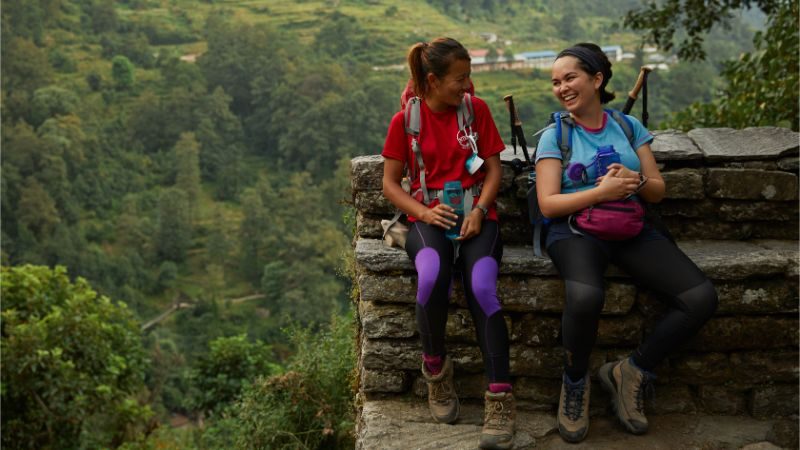
Having a quick breather.
Trekking poles will reduce the impact on your joints, and will give you extra stability when you need it. While they can take a bit of getting used to, poles make the trek much more manageable (and you can strap them to the side of your day pack when you don’t need them).
3. Be prepared for stairs. Lot and lots of them.
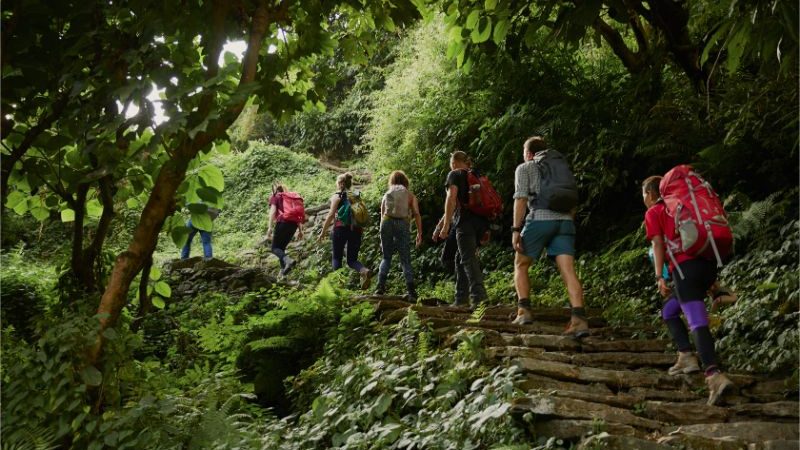
So. Many. Stairs.
On your first day of trekking, you’ll walk up 3280 stone steps into Ulleri. Your leader will likely tell you the hardest part of the trek is over, but they’re just trying to keep your spirits up. You’ll encounter SEVERAL more steps between Ulleri and Annapurna Base Camp. Several.
EXPLORE OUR FULL RANGE OF ANNAPURNA TREKKING TRIPS HERE
4. And with the ups come the downs.
For some reason, I thought the Annapurna Base Camp trail would be a series of gradual inclines, followed by gently undulating paths. I was wrong. Expect to trek up hundreds of stone steps, walk on a flat trail for ten minutes, and then walk down hundreds of steps. While your lungs will burn going up, your knees and toes will cop the brunt of the impact on the downs. This is where walking poles really come into their own.
5. Porters/jeeps/mules passing? Go mountainside.
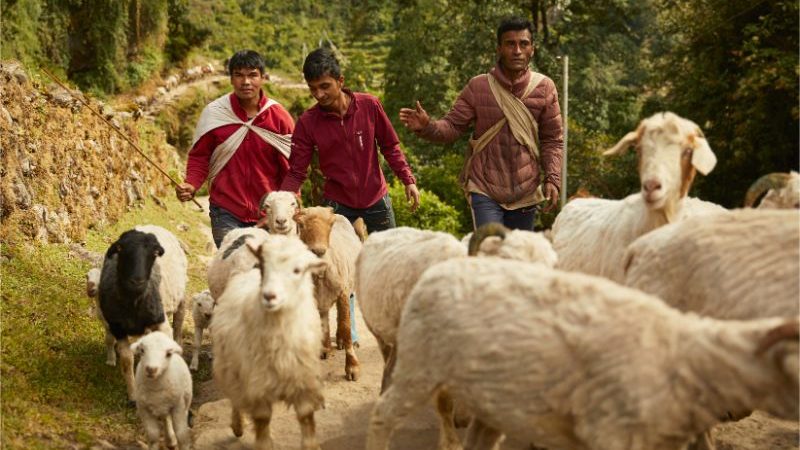
Goats coming through? Go mountainside.
On the first day of the trek, you’ll be sharing a winding dirt road with cars and jeeps for a few hours. On every other day of the trek, you’ll be sharing the trail with other trekkers, porters, and a variety of farm animals – buffalo, mules, and herds of goats. When a car, person, or animal is passing and you’re close to a steep drop, the safest option is to walk on the mountain side of the trail.
LOVE WALKING? CHECK OUT OUR FULL RANGE OF TREKKING TRIPS HERE
6. Bring plenty of cash with you
After you leave Pokhara, there are no opportunities to get money or use your credit card – you’ll need to use cash for everything along the trail. We’re talking ALL meals, snacks, hot water, power points (for charging your devices in the teahouses), Wi-Fi, drinks (including drinking water), and tips for your leader, guide and porters. Your leader can let you know how much to bring before you leave Pokhara; it’s worth withdrawing more than you need, just to be safe.
7. Same goes for toilet paper
There are toilets dotted all along the trail – almost all of them are squat toilets, but you’ll find western toilets at all the teahouses Intrepid stay in (except at Annapurna Base Camp) – and none of them have toilet paper. Make sure you have a roll in your day pack. Most of the shops and teahouses along the trail sell individual rolls.
8. Teahouses are basic, but comfortable
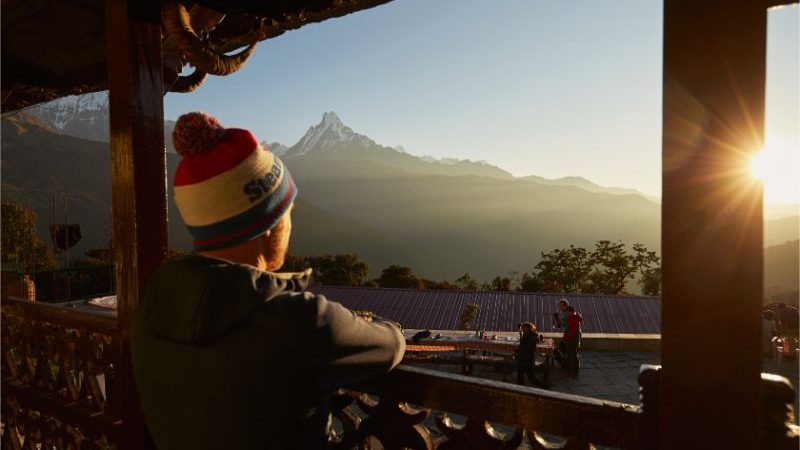
The teahouses may be simple, but they’ve got epic views.
Teahouses are locally run hotels, scattered along the trail to Base Camp, and provide a roof, bed and meal to weary trekkers. Rooms are twin share, at a minimum. At Machhapuchhre Base Camp, expect to be sharing with up to five other trekkers, and at Annapurna Base Camp (4130 metres/13,549 feet) you’re likely to be in a room with your entire trekking group.
Your bed will have a pillow, sheets and a thick blanket, however whether the bedding is washed regularly is questionable. It’s a good idea to pop a t-shirt or sarong over your pillow as a case, and wiggle into your sleep sheet if you bunk down under the blanket (which you’ll want to when you reach higher altitudes – it’s COLD). Most of the teahouses Intrepid stay in have Western toilets, squat toilets, and showers.
There’s also a communal dining room where you’ll eat dinner, have a post-trek cup of tea (or beer), play a game of cards with your group, or warm up around the fire. None of the teahouses have heated rooms, so you’ll want to warm your bones as much as you can before bedding down for the night.
RELATED: WHY I LOVED DOING A TREKKING TRIP IN NEPAL FOR MY HONEYMOON
9. Showers are plentiful. Hot water is not.
Most of the teahouses Intrepid stay in do have shower facilities, but you’ll need to pay for hot water – and just because you hand over 150 rupees (a little over one US dollar) doesn’t mean there’ll actually be any hot water left. There’ll also be a few nights where it’ll be too cold to shower anyway. Trekking to Annapurna Base Camp is a good time to embrace your natural fragrance and save water.
10. Wi-Fi is patchy
Wi-Fi is available to purchase in most of the teahouses (for around 150-200 rupees – just under two US dollars), but the connections are generally patchy; you’ll be lucky to get enough signal to post an Instagram story, let alone download a podcast. Make sure your fave playlists, podcasts and audiobooks are downloaded before you hit the trail, and use the next week and bit for a digital detox.
11. You’ll have 24-hour dal bhat power
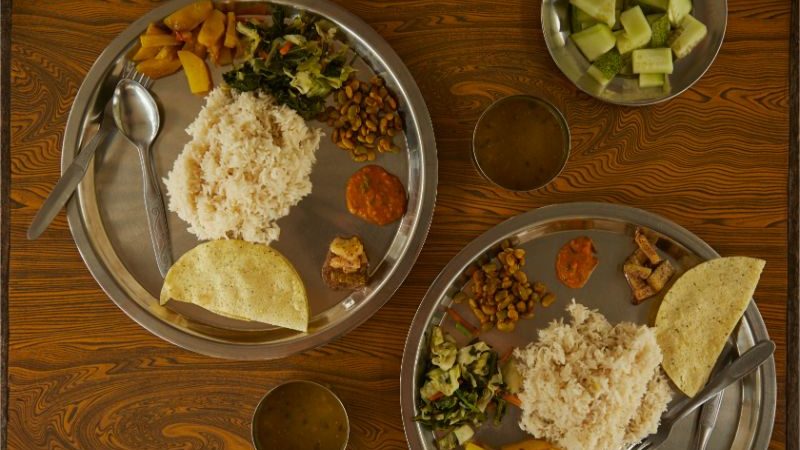
Dal bhat power.
Get used to having Nepal’s national dish for every lunch and dinner (even breakfast, if you love dal bhat as much as I did). A generous serving of rice with a bowl of lentil soup, a scoop of curry, some fiery pickles and a pappadum will greet you at every meal time – with as many refills as your stomach can handle. Dal bhat for lunch will give you the power to keep trekking to your evening teahouse, while a dal bhat dinner will make you snoozy enough to sleep. Most of the teahouses have other meals on the menu, like pizza, spaghetti, fried potatoes and chicken, but I stuck with dal bhat (along with quite a few momos, Nepal’s iconic steamed or fried vegetarian dumplings). If you’ve got dietary requirements, let your leader know when your trips starts.
RELATED: MORE THAN MOMOS – YOUR GUIDE TO NEPALI CUISINE
12. Porters are forces of nature
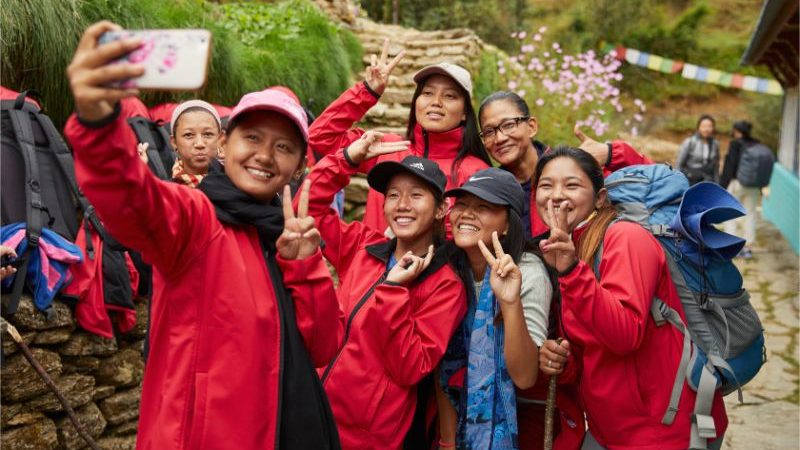
Our team of porters were SO excellent!
Your crew of awesome porters will become your best friends on the trek to Annapurna Base Camp. Not only will they carry your main packs, they’ll also take your meal orders (and often help out in the teahouse kitchen cooking dal and rolling momos), play card games with you, teach you Nepalese phrases, and cheer you on when you’re feeling worn out. Intrepid regulates how much weight its porters carry (10 kilograms/22 pounds each, max), however you’ll see other porters along the trail carrying up to 80 kilos (176 pounds) of gear. Make sure you move off the path when porters are coming, so they can pass quickly and safely.
13. It’s hard to sleep once you get into altitude
I slept well every night of the trek, until we got to Machhapuchhre Base Camp. At 3700 metres (12,139 feet) above sea level, oxygen is reduced so breathing can be difficult. Many people visiting high altitudes experience less sleep, troubles getting to sleep, and difficulties staying asleep. Make sure you’re giving your body time to adapt to the change in altitude – take it slowly, drink lots of water (more than three litres per day), and eat plenty of carbs #dalbhatpower.
RELATED: ADVENTURE TRAVEL ISN’T JUST FOR THE YOUNG. MY NEPAL TRIP IS PROOF.
14. The terrain is really varied
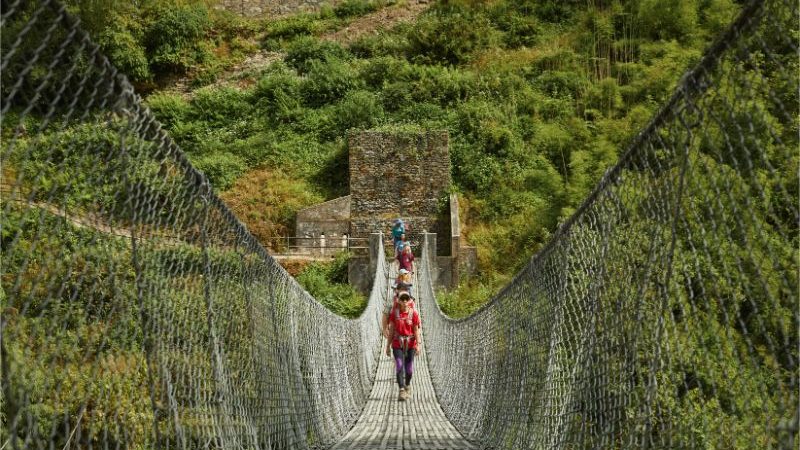
One of many suspension bridges on the trail.
You’ve heard about all the stone steps, which you’ll come across in varying forms on every day of the trek, but the terrain on the Annapurna Base Camp trail is much more diverse. You’ll also be walking on winding, packed-dirt paths (which are often muddy), over tree roots (which are often slippery), hopping on rocks across waterfalls, ambling over suspension bridges (or clutching onto the arm of a fellow trekker, if you’re as scared of heights as I am), stepping across bamboo bridges, navigating loose gravel, climbing over wooden stiles, and scrambling over rocks. Tread carefully and make sure your boots are waterproof and have good ankle support.
15. The scenery is seriously jaw dropping
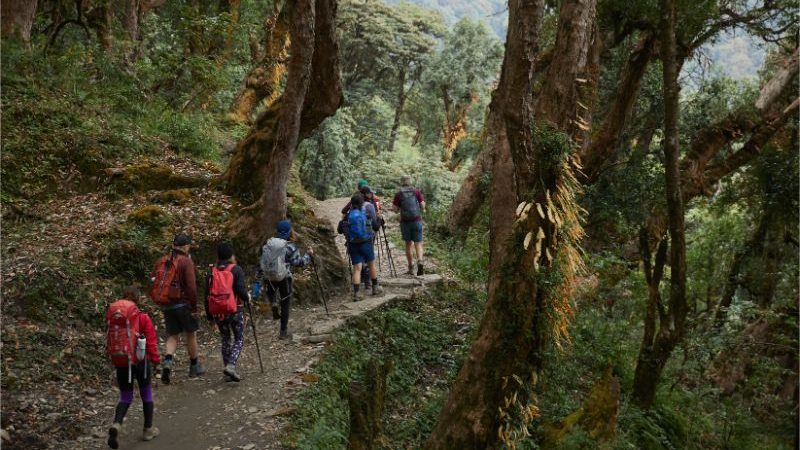
I wasn’t expecting scenery like this…
I wasn’t prepared for how beautiful the trek to Annapurna Base Camp is. You’ll walk through farmland, past fields of sunflowers and bright orange marigolds, then through forest and jungle, beneath thick leafy canopies and colourful prayer flags. One day the trek will open up to a cavernous valley, the mountainsides covered in pink rhododendron and grey slabs of granite; the next, you’ll be ducking and weaving through bamboo forests, dodging fruit-throwing monkeys. Any time you feel tired, just stop and look around – the beauty of your surroundings will encourage you to keep going.
RELATED: WHY THE ANNAPURNA CIRCUIT IS THE TREK OF A LIFETIME
16. The temperature is as diverse as the scenery
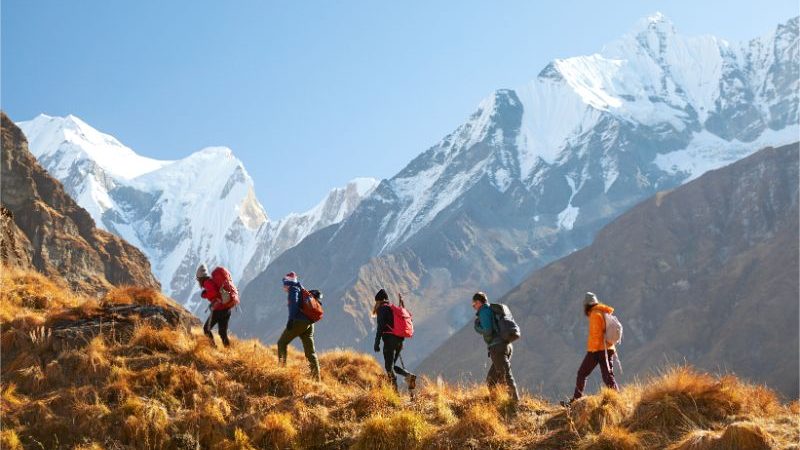
This will be one of the most beautiful experiences of your life.
I have never sweat more than I did on the first day of trekking, and I’ve never felt colder than I did waiting to watch the sun rise at Annapurna Base Camp. Prepare yourself for warm to hot days, where you’ll wish you’d packed your shorts and tank top, and freezing cold nights, where you’ll wear EVERY piece of clothing you brought with you to bed. And regardless of whether the weather is hot or cold, keep your face slathered with plenty of sunscreen.
17. You’ll need water purification tabs
Safe, filtered drinking water is available to buy from all the teahouses, but if you’re dubious about how safe it really is – or if you opt to fill up your bottle with tap water instead – pop in a water purification tablet (each brand is different, so read the instructions carefully). Remember that you usually need to wait about 30 minutes for the tablet to do its job before you can drink. You need to have two litres of drinking water when you set off each morning, filling up again when you stop for lunch. Ideally, you’ll be drinking 3-4 litres each day.
18. Go slow
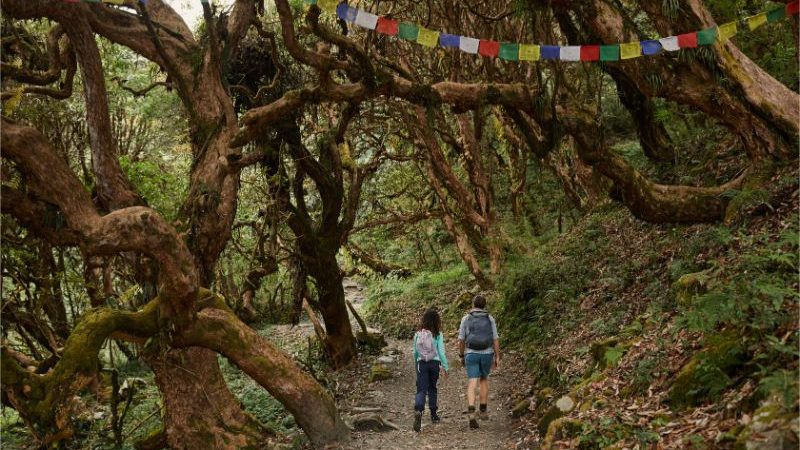
An enchanted forest?
Maintaining a steady – nay, slow – pace is what’s going to get you to Base Camp. Don’t rush, don’t push yourself, and don’t try to keep up with the fastest person in your group. Taking a slow, measured pace (particularly on the many stairs up) will make breathing easier and put less pressure on your lungs. Someone told me before the trek: If you feel like you’re going too slowly, go slower. It made no sense at the time, but it absolutely helped.
19. You can buy snacks along the trail (but they’ll get more expensive the higher you go)
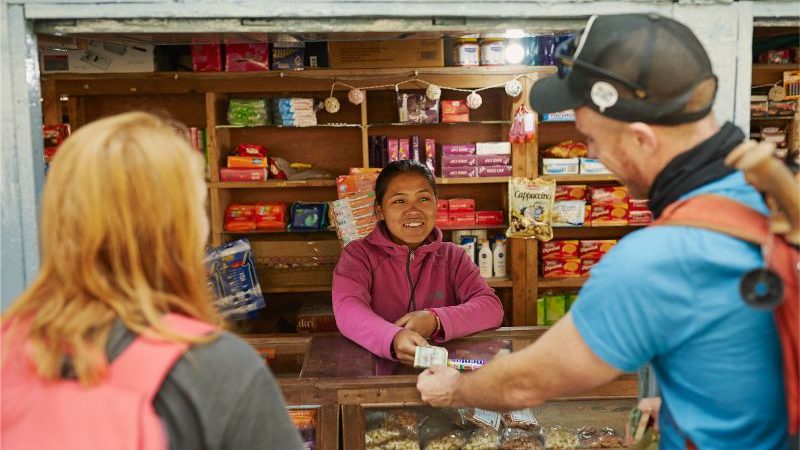
Necessary snack stop.
Feel free to stock up on snacks in Kathmandu or Pokhara, but there are plenty of small shops to grab chocolate bars, Oreos, Pringles and soft drinks along the trail – and you’re supporting the local economy to boot. Keep in mind that things get more expensive the higher you climb. Oh, and if you’re miffed that all your Pringles are crushed, it’s because they’ve trekked up the mountain on the back of a porter in a basket that’s probably also contained three heads of cabbage, a pair of sneakers, 12 bottles of beer and a gas stove.
20. Get up early and watch the sunrise at Poon Hill
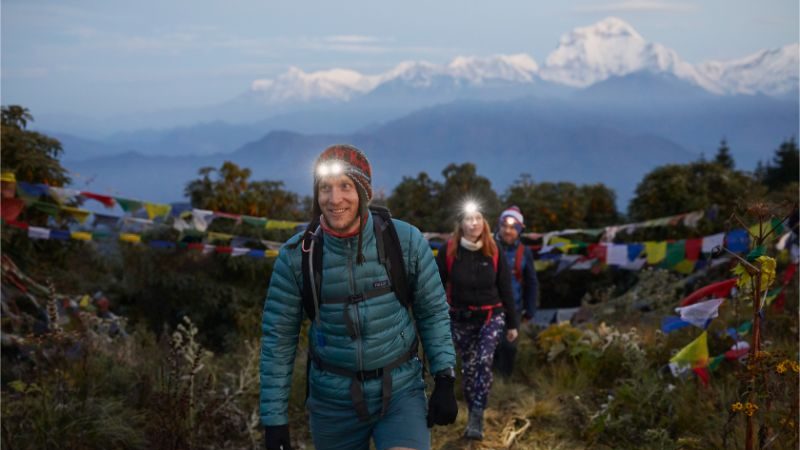
Poon Hill is not to be missed.
The one-hour uphill hike to Poon Hill on the third day of the trek is optional. And it’s quite challenging too. However, please get out of bed and do it. Watching the surrounding mountains bathed in the sun’s morning glow is a spectacular way to start the day, and you’ll kick yourself for not going when you see your travel mates’ photos. It’s a steep climb, and you’ll be trekking in the dark for most of the way, so make sure you take a head torch. It’ll be cold as well, so pack a thermal buff and warm gloves, along with your usual cold-weather gear. Take some cash with you for a masala tea when you get there – your cold hands will thank you for it.
21. Trekking to Annapurna Base Camp is absolutely incredible
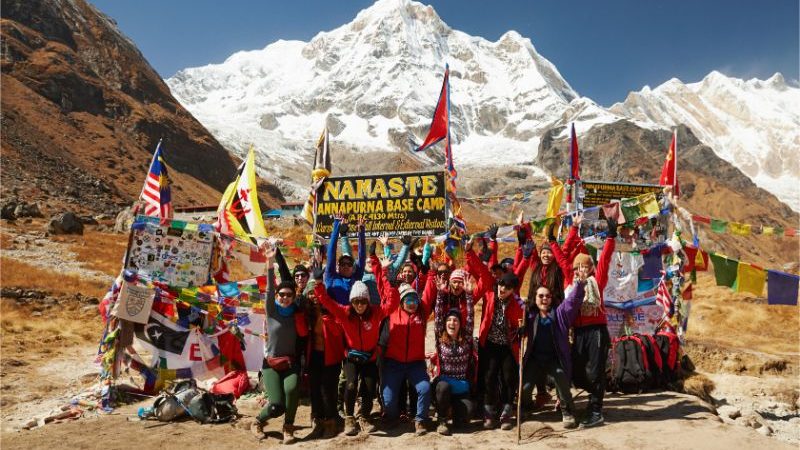
Made it!
I’m not really a trekker. I found parts of the trail incredibly challenging. There was one day where I cried multiple times, from pain, exhaustion, and fear that I wouldn’t make it to Base Camp (spoiler: I did, and you will too). But this trek was one of the most amazing experiences of my life. Waking up to views of some of the tallest mountains in the world, watching the most spectacular sunsets on earth, walking through dense forest with friendly mountain dogs, playing the most confusing card games with our crew of porters, and laughing like I’ve never laughed before with the other trekkers in our group. I believe ‘life-changing’ is an adjective that’s bandied around far too often, but trekking to Annapurna Base Camp was honestly a life-changing experience for me. I think it will be for you too.
Up for a truly epic adventure? Join us on a trek to Annapurna Base Camp now – full details here.
All photos by Matt Cherubino.

